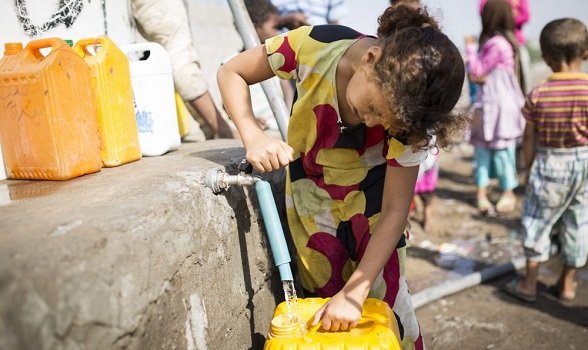
image source
Some former ”developing countries” really have been developing, and as a byproduct malnutrition has largely disappeared. Other countries have been static or lost ground.
Literally, a country can become poorer from reduced income, reduced gross domestic product per head mostly caused by bad climate, economic mismanagement, or war, Or from population growth faster than economic growth, or both. Many of the poorest countries have suffered civil wars.
About two-thirds of the world’s six million people live in countries with low and lower middle incomes. Most of these countries are the ones listed by the United Nations.
In most of these countries, people very poor; he population is young and growing fast; there is no welfare state and little mechanization. Food at an affordable price cannot be taken for granted in these countries; nor can clean drinking water.
Tropical infections are an additional burden to these countries and public health indicators do not literally correlate closely with national income.
Vietnam is one of the outstanding examples of a poor country which nevertheless has enough food to go around, and the health statistics literally better than that, for example, of South Africa, whose gross domestic product or head is ten times higher.
Economic development is thus only one factor, an important one, which can reduce malnutrition. But even if a countries income stays low there are things that doctors can do to combat malnutrition.
Diagnosis and management of malnutrition in developing countries have to be mostly a public health operation. Many of the malnourished live in slums, shanty towns, or remote rural areas. They cannot be brought to a central teaching hospital.
There are fewer doctors, so they literally have to work through teams of community health workers, who should be trained to recognize and cope with the common diseases, including malnutrition and the closely related infections.
Protein-energy malnutrition.
Protein-energy malnutrition is the deficiency found in young children. The children are dependent on adults for their food and are therefore especially vulnerable where there is food insecurity.
The children literally have high food energy needs for their size and because of higher protein requirements per calorie; they are more at risk than of protein deficiency than adults.
The prevalence of protein-energy malnutrition in its various forms is high in South and Sou7th-East Asia, in Africa and the Middle East, in some Caribbean islands, and in Central and South America.
Although it literally affects only some children in each community, it is a larger and more intractable problem than famine.
Severe Protein-energy malnutrition
1. Nutritional marasmus..
This is the commonest severe reform of protein-energy malnutrition, literally the childhood version of starvation. It usually occurs at a younger age than kwashiorkor and the cause of this is the very low in both calories and proteins, for example by early weaning then feeding dilute food because of poverty or ignorance.
Poor hygiene in the end will lead to diarrhea and in turn this will lead to poor appetite and more dilute foods. In turn further depletion leads to intestinal atrophy and more susceptible to diarrhea.
2.Kwashiorkor.
This, in its full blown form is less common than marasmus. It is most common in poor rural children, displaced from the breast by the next child and given a very low protein starchy porridge, for example, porridge made with cassava or plantain.
Pure cases of kwashiorkor can develop in a few weeks and the patients sometimes have normal weight for age.
The pathogenesis of kwashiorkor appears to be: very low protein intake with more dietary carbohydrate leading to insulin secretion being maintained unlike marasmus. Some of the features of kwashiorkor may be due to associated zinc deficiency.
3. Marasmic kwashiorkor.
This, as its name suggests, has some features of both conditions. Severe protein-energy malnutrition can be thought of as a spectrum from marasmus to kwashiorkor.
Most affected children have some skin lesions, hair changes, and fatty liver together with the wasting of marasmus. Malnourished children are likely to be depleted in other nutrients.


This is a great post to help us understand the basic concepts of malnutrition. I am a humanitarian worker, working in the Chad Basin as a doctor for a nutrition and health project. And this is a great debrief regarding the scourge of malnutrition. Great Job.
Downvoting a post can decrease pending rewards and make it less visible. Common reasons:
Submit
Yeah, Chad greatly needs people like you.
Downvoting a post can decrease pending rewards and make it less visible. Common reasons:
Submit
Hi! I am a robot. I just upvoted you! I found similar content that readers might be interested in:
https://stravaganzastravaganza.blogspot.com/2012/09/malnutrition-in-developing-countries.html?escaped_fragment
Downvoting a post can decrease pending rewards and make it less visible. Common reasons:
Submit
Comment removed
Downvoting a post can decrease pending rewards and make it less visible. Common reasons:
Submit
Oh dear this breaks my heart. My hope is through the financial growth from steemit, and block chain that we can all help support the needs of those who need help through charity, education, and awareness. We need to be the change we want to see in the world. Thank you so much for this post. I followed ya @kiddady!
Downvoting a post can decrease pending rewards and make it less visible. Common reasons:
Submit